Pink pepper - features and uses in cooking
Many people call this culture pink pepper, however, it has nothing to do with pepper. Unless the fruits of this plant are very similar in appearance and size to peppercorns of a pinkish hue, but there is even a little peppery spicy taste in them.
Content:
- Where does the shinus tree grow and its features
- Pink pepper - what a spice
- Useful properties of pink pepper
- How to choose the right pink pepper
In fact, what is known as pink pepper is the fruit of the shinus tree native to Brazil. Despite this confusion, pink pepper is quite popular for use in cooking due to its unusual taste, which combines notes of anise and the sourness of cranberries.
Where does the shinus tree grow and its features
This tree grows in the United States, Brazil, you can find it in Australia, Hawaii, Puerto Rico, Argentina, Paraguay. But the main supplier of pink pepper berries to the markets of many countries is Reunion Island.
In fact, the condiment known as pink pepper is made from a mixture of two kinds of shinus - pistachio and soft.
Externally, pistachio peppers look like a short, small tree, rarely growing above 10 meters, even in nature.
This plant belongs to the representatives of the sumac family, and therefore an accidentally broken branch or contact with damaged tree bark can cause serious dermatitis, provoked by the active compounds contained in the sap of the tire.
The manifestation of an allergic reaction to bloom this kind of trees. This is attributed to the fact that the tree emits very active volatile aromatic compounds.
Pink pepper - what a spice
Pink pepper is a mixture of the fruits of two types of shinus. Their berries in shape and slightly in taste resemble the usual peppercorns, for which they got their name. There is definitely a sour note in the flavor of the berries, and their reddish-pink color makes them look like cranberries.
Fresh peppercorns have practically nothing to do with the taste of pepper, they do not have a pungent taste, but are slightly sweet. Rather, it may have the same aftertaste as after eating the ginger root. There is an admixture of both menthol and anise notes, and a slightly tarry aroma is felt. In general, pink pepper is quite difficult and very unusual as spice.
To keep the color of the berries practically unchanged, it is dried by deep freezing, pickling or salting.
But while the pepper gets to our stores, is processed, little remains of its true taste, alas. To reveal its taste, it is recommended to dry the berries slightly over a fire, in a pan without adding oil. The taste is also revealed more strongly in the berries ground in the mill. Moreover, it is necessary to add ground pink pepper to dishes immediately after grinding.
In the cuisines of some countries, pink pepper is considered a necessary component in the preparation of various national sweets, drinks, and confectionery.
Very often fish, meat, poultry and seafood dishes are seasoned with this spice. It is added to various salads and sauces. Often served asparagusseasoned with pink pepper.
It is not uncommon to find pink peppers in mixtures of several peppers. Surely, many culinary experts are familiar with such a spice as "Four peppers".Here, in addition to the famous white, black, green pepper, it also contains pink. But in this combination, pink pepper almost loses its original taste, since after grinding its pleasant taste and smell are quickly lost.
It is worth remembering that even fresh pink pepper cannot be stored for more than six months. And it's worth knowing that it is toxic in large quantities.
Useful properties of pink pepper
Besides the fact that adding it to various kinds of dishes makes them savory and aromatic, the medicinal properties of pink pepper are also known.
It has a beneficial effect on the digestive processes and the gastrointestinal tract as a whole (it is used in the treatment of diarrhea), improves the functioning of the cardiovascular system. In addition, it is used in the treatment of gout, rheumatism, and various types of arthritis.
The fruits of pink pepper are also used in the production of essential oils. For cosmetic and medical purposes, it must be used with great care, since there is a high likelihood of skin irritation and an allergic reaction.
For patients with gastritis or stomach ulcers, it is better to refuse to eat foods containing pink pepper, as it irritates the mucous membrane and can provoke an exacerbation of these diseases.
How to choose the right pink pepper
If you decide to buy this exotic and unusual-tasting spicy berry, it is best to carefully examine the berries sold. Good "peppercorns" have a shiny surface, they are large and have a bright color. Make sure that the package contains a minimum of greyish yellow or black pea inclusions.




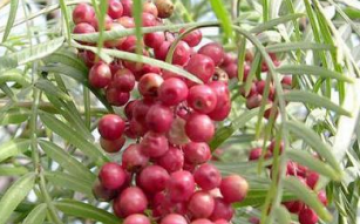
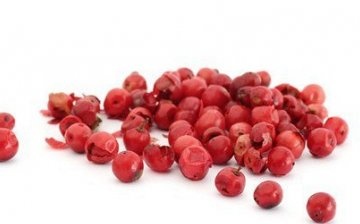
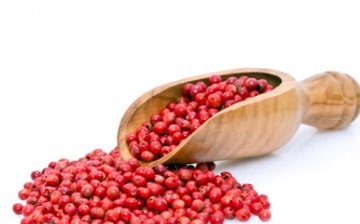




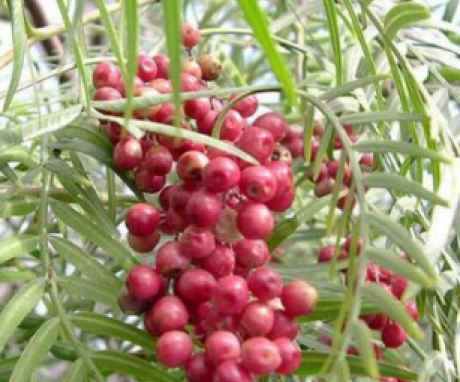
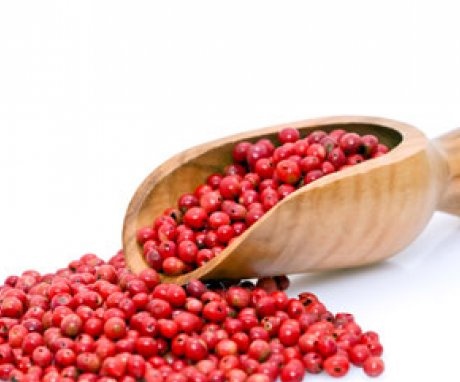

I do not use pink pepper on my own, I add it to the mill with a mixture of different peppers (black, white, chili and allspice). The result is a fragrant and spicy seasoning, with a spice, which is suitable for the preparation of any dish.